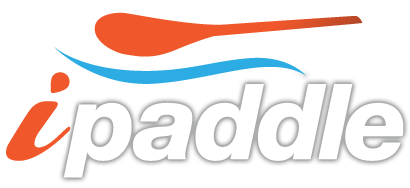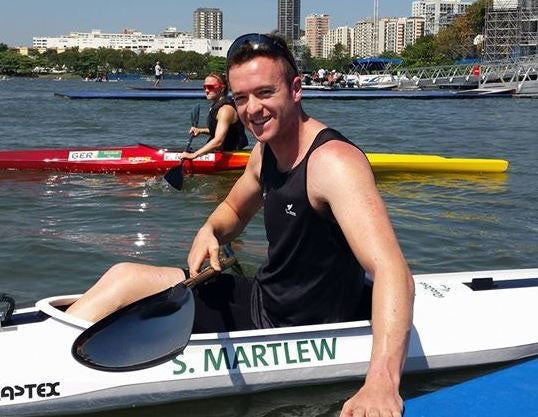The ipaddle spectator’s guide to Kayaking at the Olympics
What is the kayak racing event at the Olympics?
Paddling sports at the Olympics have been lumped under type of boat: Canoe. But actually there are two: Canoe and Kayak. I don't see any fancy icon for flat water sprint kayak racing either. It's a bit confusing so lets start at the beginning...
What’s all those funny letters and numbers stand for?
The race name is represented by a series of letters and numbers:
M for Men or W for Women
C for canoe or K for kayak
1, 2 or 4 paddlers
200m, 500m, 1000m or 5000m is the race distance
For example
Lisa Carrington will race in the K1W 500m (Woman/Kayak/1 paddler/500m race) and K1W 200m race (Woman/Kayak/1 paddler/200m race).
How can I tell if it's a canoe or a kayak?
Good question. The easy answer is actually to look at the paddle: if it is single-ended, it’s a canoe. If it’s double-ended, it’s a kayak.
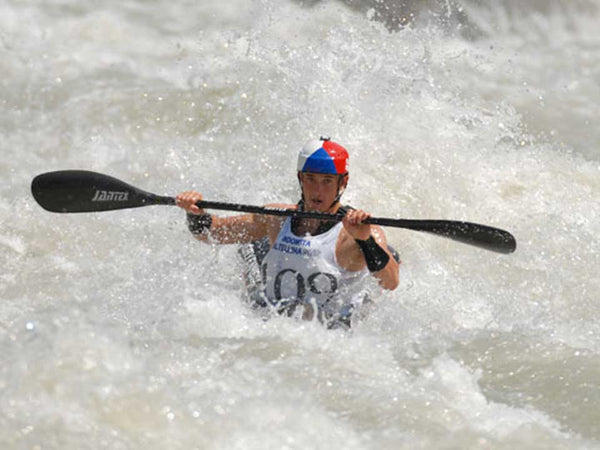
You can tell it's a kayak by the paddle
The other way is to look at how the paddler is positioned in their boat:
- If the paddler is sitting freely it’s a kayak.
- If the paddler is strapped and is sitting on their knees, it’s a canoe.
- If they’re kneeling in a striding position, it’s a canoe.
Types of courses: sprint vs slalom
Slalom
It's like the Rally Car racing of the paddling world. Exciting and messy, there’s a lot of fancy moves, sharp turns, rolls and near drownings.
Slalom is raced on a 300m course of artificial rapids, fastest time wins. However, there’s also obsticles called ‘gates’ that paddlers must go through, yet avoid touching or they incur time penalties. The boats are wide and short so paddlers can balance, control and maneuver quickly and splash a lot. There are Kayak and Canoe divisions, with either one or two paddlers.
There’s a really good overview of the sport here: ICF Canoe Slalom Page

Max Hoff sitting inside a Sprint Kayak on a flat water course.
Sprint
Both Sprint Canoe and Sprint Kayak races takes place on flat water: boats go from start to finish as quickly as possible. The boat whose bow (front tip) crosses the finish line first wins. Simple.
Sprint paddlers don't like choppy waves or windy conditions. It puts a lot of drag on the boat and makes it exhausting for the athlete. The boats thin and long so they are easily to tip over. Kayaks have a cockpit that is low and waves can splash into the boat, making it heavier and slower.
Sprint Canoe uses a stand up canoe, where the athletes are on one knee in a ‘striding’ position. They use a one ended paddle and the canoe is not closed in. In New Zealand you are more likely to see this sport at a Waka Ama or open water event.
Sprint Kayaks are like the Formula One of water sports: fast and sexy. Sprint Kayaks are extremely high tech piece of kit. Most single kayaks weigh less than 15kg. A four person kayak (K4) can go fast enough to pull a waterskier.
What are the Sprint Kayakers doing with their feet?
Although it looks like they athletes are on a paddleboat, the kayak's only propulsion comes from the paddle blade moving through the water.
In fact, the legs steer the rudder, located underneath, at the back of the boat. When the paddle is acting on one side of the boat, the rudder is steered in the opposite direction, so that all the energy helps direct the boat forward and no correcting stroke is needed.
Distances
In Sprint Kayak at the Olympics, there are three distances: 1000m, 500m and 200m.
Tactically speaking, the shorter races are a burst of pure power. Athletes go full tilt from the start gun to the finish line.
Longer races require a mix of stamina and bursts of speed. Some athletes will power out of the blocks, then slow down through the middle. Others will hold back until the last 200m. Each athlete will have a race plan that they have trained for. The trick is to not be distracted from your plan by the other competitors.
Athletes talk about pushing through the pain. Lisa Carrington says she starts to count down from 50 strokes until the end of the race. She digs deep by foccusing on how fast she wants to go, not how much it hurts.
Jargon and tips
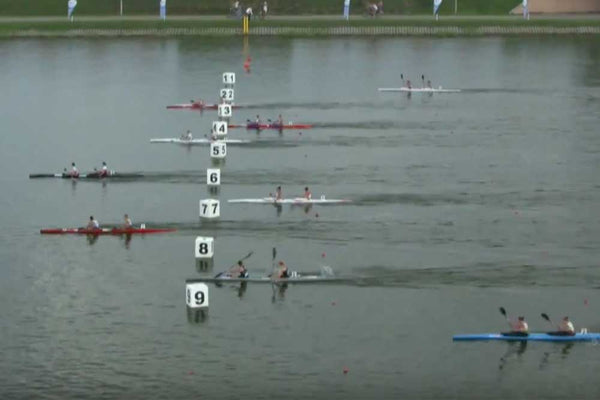
Look for the higher ranking paddlers in the middle lanes
Paddler: The canoe or kayak athlete
Shaft: The handle of the paddle
Blade: The flattened spoon shaped flap at the end of a paddle
Pull: When the paddle blade is dragged through the water to create momentum
Cockpit: The area that the paddler sits
Wash: The rough water produced by a moving boat
Start gate: The mechanical ‘shoe’ in which the bow of the canoe sits to ensure an even start
Bow: Very front tip of the canoe – when the bow crosses the line the athlete’s time is taken
Lanes 4 and 5: Centre lanes are reserved for the highest ranking competitors.
European countries are the most successful: Hungary, Germany, Belarus, Ukraine – landlocked countries especially.
For more Olympic news check out our blog here
Also in ipaddle news

2016 ICF Canoe Marathon World Championships
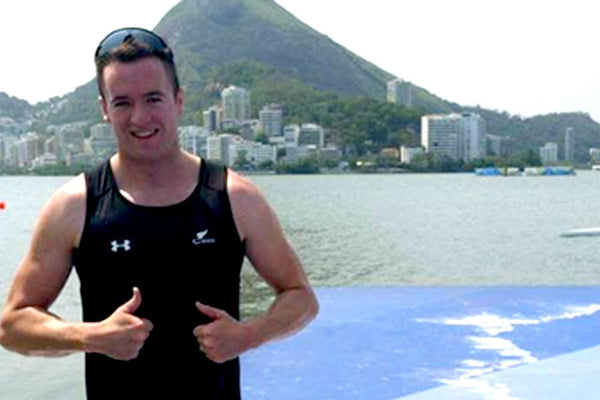
RIO PARALYMPICS 2016: SCOTT MARTLEW
Scott Martlew has competed his Rio Paralympic Dream with an eighth place finish in the A Final.
